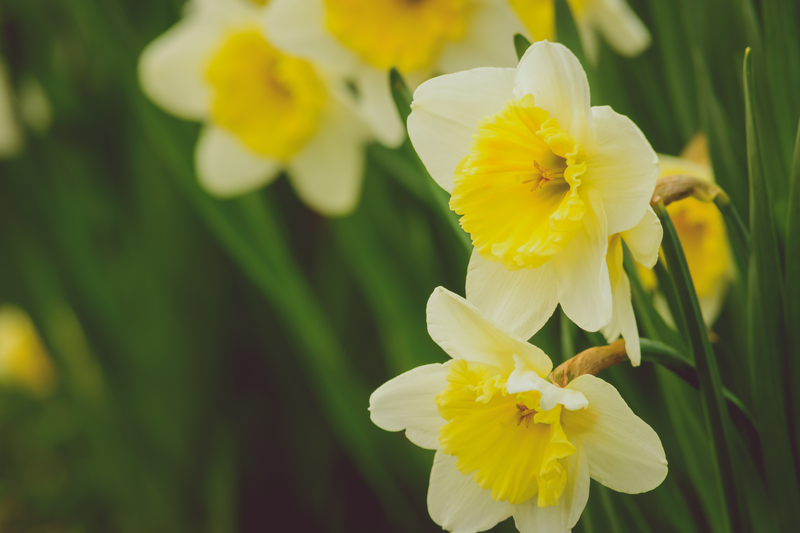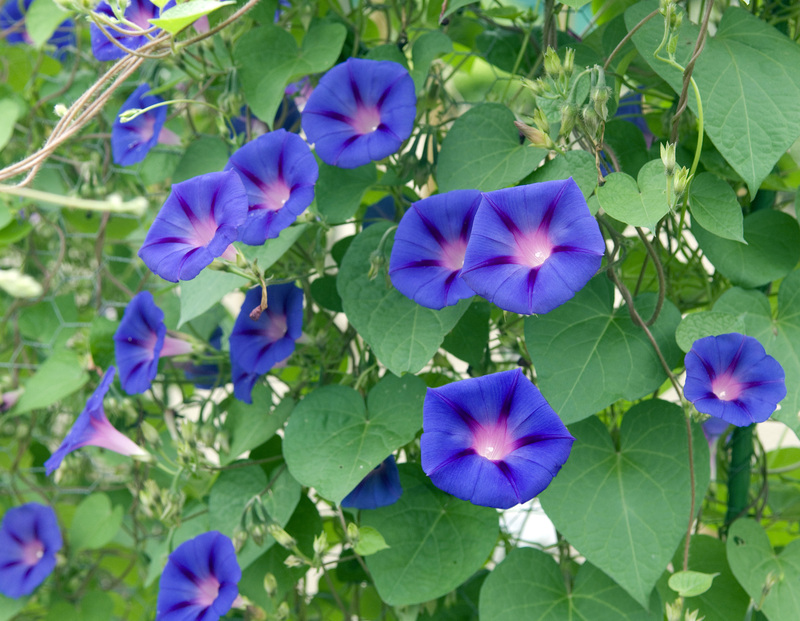Essential Practices for a Lustrous Herb Garden
Posted on 16/09/2025
Essential Practices for a Lustrous Herb Garden
A thriving and attractive herb garden is a delight to the senses and a practical addition to any home. Whether you aspire to cultivate a lush windowsill herb display, establish expansive outdoor herb beds, or simply provide your kitchen with fresh, aromatic sprigs, following critical practices for herb gardening success is key. In this comprehensive guide, we'll explore effective methods and best practices for cultivating a lush, healthy, and enduring herb garden that remains lustrous season after season.
Why Grow Your Own Herb Garden?
There is an undeniable charm in harvesting fresh herbs mere steps from your kitchen door. Tending to a flourishing herb plot can transform your culinary experiences, enhance your wellbeing, and beautify your environment. Growing herbs at home:
- Enhances Flavors: Freshly picked basil, mint, or rosemary elevates every dish.
- Boosts Health: Many herbs have medicinal properties and antioxidants.
- Reduces Costs: Fresh herbs from the store can be expensive and have a short shelf life.
- Attracts Pollinators: Flowering herbs welcome bees and butterflies, promoting overall garden health.
- Adds Beauty & Fragrance: A well-maintained herb patch is as stunning as it is useful.

Foundational Steps for Building a Lush Herb Garden
1. Choose the Right Location
The success of your herb oasis hinges on where you plant it. Most culinary herbs such as basil, thyme, oregano, and sage love sunlight and need at least 6-8 hours of direct sunlight each day.
- Select a site with good sunlight exposure. South-facing windowsills or open garden beds are perfect.
- Use containers for flexibility. Pots allow you to move your garden as light conditions change with the seasons.
- Ensure air circulation. Crowded or poorly ventilated areas can promote mildew or disease.
2. Soil Preparation: The Root of Success
The foundation of a prosperous herb garden is in the soil. Most herbs prefer well-draining, fertile soil that is neither soggy nor extremely dry.
- Amend garden beds: Mix compost or well-rotted manure to enrich the soil and improve texture.
- Check pH: Most herbs thrive with a slightly alkaline to neutral pH (6.5-7.5).
- Ensure drainage: Sandy loam is ideal; if using pots, ensure they have drainage holes and use a high-quality potting mix.
*Tip: Mint can grow in heavier soils, but most Mediterranean herbs dislike overly wet roots!
3. Choosing Herb Varieties for Your Garden
A lustrous herb garden is as much about diversity as it is about abundance. Select a mixture of annuals, biennials, and perennials to ensure fresh flavors throughout the year.
- Classic Mediterranean Herbs: Basil, thyme, rosemary, oregano, sage, lavender.
- Cool-Climate Herbs: Parsley, chives, mint, cilantro, tarragon.
- Lesser-Known Varieties: Lemon balm, lovage, marjoram, sorrel.
Tip: Before purchasing seeds or seedlings, consider your culinary preferences and climate compatibility. Always check each herb's specific light, soil, and water requirements for best results.
Essential Care Practices for a Vibrant Herb Garden
4. Watering with Wisdom
Overwatering is a common mistake that can lead to wilted herbs and root rot. On the other hand, underwatering may result in stunted, pallid plants. To maintain a lustrous home herb garden:
- Water in the morning: This allows leaves to dry off by evening, reducing the risk of fungal issues.
- Check before watering: Insert your finger into the soil -- water only when the top inch feels dry.
- Use mulch: Organic mulch (straw, bark, or compost) helps soil retain moisture and reduces weeds.
- Adjust for pots: Container herbs may dry out faster and need more frequent watering in warm weather.
*Tip: Herbs like rosemary, sage, and thyme prefer slightly drier conditions compared to parsley or mint.
5. Pruning and Harvesting for Health
Regular, gentle harvesting is crucial for keeping your herb plants vigorous and encouraging bushy growth. Some key guidelines:
- Pinch young plants: When seedlings reach 6 inches, pinch out the tips to promote branching.
- Harvest frequently: Use clean scissors or fingers, and never take more than one-third of the plant at a time.
- Remove flowers (except for pollinator-supporting herbs): For many culinary herbs like basil, removing flower buds keeps the plant productive and prevents bitterness.
- Deadhead perennials: After flowering, cut back to encourage a second flush of leaves.
6. Fertilizing for Robust Growth
Herbs are typically light feeders, but they respond well to the right nutrients. For a truly lush herb garden:
- Add compost at planting time.
- Feed pots monthly: Use a diluted liquid, organic fertilizer (such as seaweed or fish emulsion).
- Avoid excess nitrogen: It can promote leaf growth at the expense of flavor and aroma.
7. Mulching and Weed Management
A well-mulched herb border not only keeps the soil moist and cool, but also suppresses weeds and adds nutrients as it breaks down.
- Apply an organic mulch: 1-2 inches of straw, shredded bark, or leaf mold does wonders.
- Hand-weed regularly: Weeds compete for water and nutrients and may harbor pests or diseases.
Protecting Your Lush Herb Garden from Pests and Diseases
8. Natural Pest Prevention
Fortunately, most herbs are pest-resistant due to their aromatic oils, but aphids, spider mites, and slugs may occasionally appear. For a vibrant herb garden:
- Encourage beneficial insects: Ladybugs, lacewings, and parasitic wasps are natural enemies of aphids.
- Companion planting: Plant pungent herbs like dill, chives, or garlic near vulnerable vegetables as a natural deterrent.
- Manual removal: Pick off slugs or use a blast of water to remove aphids.
- Neem oil or insecticidal soap: Apply only as a last resort and avoid flowering times to protect pollinators.
9. Disease Defense
Most herb plant diseases stem from excessive moisture, crowding, or poor air flow. Keep your herb patch healthy by:
- Spacing plants properly: Follow guidelines for each variety to avoid overcrowding.
- Watering at the base: Wet foliage invites fungal diseases like powdery mildew.
- Rotating crops: In beds, move annuals to a new location each year to disrupt disease cycles.
- Removing affected foliage: Dispose of diseased leaves promptly to prevent spread.
Sustainable and Eco-Friendly Herb Gardening Tips
10. Composting and Recycling in the Garden
For a truly lush and sustainable herb garden, recycle kitchen waste and garden trimmings into compost. This not only reduces landfill waste, but also provides your herbs with nutrient-rich fertilizer.
- Compost herb stems: After harvest, add the non-woody stems to your compost bin.
- Use shredded leaves: Autumn leaves make excellent mulch and compost fodder.
- Avoid treated wood or synthetic chemicals: Especially when growing edible herbs, keep your garden organic and toxin-free.
11. Water Conservation Strategies
A thriving herb garden doesn't have to strain your water resources. Try:
- Drip irrigation: Delivers water directly to root zones, minimizing waste.
- Rainwater harvesting: Collect and use rainwater for a lower-impact, softer-water option.
- Mulching: As discussed, mulch dramatically reduces how much water your herbs need.
Year-Round Herb Gardening: Extending the Season
12. Indoor Herb Cultivation
Don't let frosty weather or limited outdoor space stop you from enjoying a vibrant indoor herb garden. Many herbs thrive year-round indoors with the right care.
- Choose compact varieties: Basil, chives, parsley, thyme, and oregano do well indoors.
- Provide bright indirect light: A sunny window or supplemental grow lights keep herbs happy.
- Mind humidity and air flow: Dry indoor heat can stress tender plants; use a humidity tray or small fan if needed.
13. Overwintering Perennial Herbs
Some perennial herbs (like rosemary, lavender, and thyme) can withstand mild winters, but may need protection in colder regions.
- Mulch roots heavily: A thick layer insulates plant crowns from freezing.
- Bring pots indoors: Before first frost, move tender perennials into an unheated garage or porch.
- Minimize water: Dormant herbs need less moisture; water sparingly.
Design Tips for a Striking, Lustrous Herb Garden
A garden can be both practical and remarkable. With some thoughtful design, your herb haven can become a focal point in your landscape--or a statement on your windowsill.
- Layer heights: Place tall herbs (like dill or fennel) behind lower-growing varieties (like thyme or marjoram).
- Use color and texture: Combine purple basil, variegated thyme, and silver-leafed sage for visual interest.
- Plant in geometric shapes: Raised beds, spiral patterns, or clustered containers organize your herb garden beautifully.
- Include pollinator support: Allow a few chive or oregano plants to bloom, feeding bees and attracting beneficial insects.

Common Problems and Solutions in Herb Gardening
- Yellowing leaves? Usually a sign of overwatering or poor drainage. Amend soil or repot with fresh mix.
- Leggy, stretched plants? Not enough light. Move to a sunnier location or supplement with grow lights.
- Bitter flavors? Herbs that flower or have too much nitrogen fertilizer may lose their best taste. Trim flowers and ease up on feeding.
- Pests or disease? Practice good garden hygiene and rotate crops. If infestations occur, treat promptly with organic methods.
Conclusion: The Benefits of Consistent Herb Garden Practices
By embracing these essential practices for a lustrous herb garden, you ensure your plants stay healthy, productive, and visually captivating year after year. With the right foundation, attentive care, and a touch of creativity, your personal herb oasis will supply you with fragrant leaves, culinary delight, and a beautiful green sanctuary. Whether you're a seasoned horticulturalist or just beginning your journey, every lush, vibrant herb garden thrives on informed, loving stewardship. Happy gardening!



